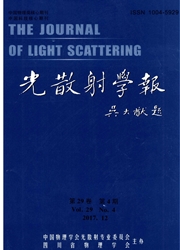

 中文摘要:
中文摘要:
利用拉曼(Raman)光谱技术分别对中国新疆、青海、江苏、辽宁及韩国、俄罗斯、加拿大、新西兰和澳大利亚的软玉样品进行无损分析研究。首先利用拉曼光谱区分了透闪石型和阳起石型软玉,并对软玉双链结构中Na+、K+对Ca2+以及Al3+对Si2+的不同置换程度引起低频区域特征峰的漂移进行分析,同时还研究了表面状态和显微结构对674cm。附近峰强的影响。最后利用拉曼(Raman)光谱技术结合质子激发X射线荧光(PIXE)和X射线衍射(XRD)对河南安阳殷墟遗址、河南省洛阳地区和浙江良渚遗址出土的9件中国古代玉器进行透闪石型软玉的矿相标定,证明拉曼光谱在中国古玉器结构测试和材质鉴定中是一种很好的无损分析手段。
 英文摘要:
英文摘要:
The Raman spectroscopy are used to analyze the nephrite jades from Xinjiang, Qinghai, Jiangsu, Liaoning, Korea, Russia, Canada, New Zealand and Australian. First of all, the Raman spectroscopy can be used to identify the tremolite type nephrite jades and actinolite type nephrite jades. Secondly, the evident shift of Raman peaks in the low-frequency region reflects the chemical substitutions that typically occur in nephrite jades. Finally the relative intensity of the symmetric stretching vibration of Si-Ob-Si in 674cm-1 with the surface condition and die micro-morphology are studied separately. Based on the Raman spectroscopic study the 9 Chinese ancient jade artifacts, which were excavated from Yinxu Site of Anyang in Henan Province, Luoyang in Henan Province and Liangzhu Site of Zhejiang Province, are identified as the tremolite type nephrite jades. It is shown that the Raman spectroscopic technique is a good nondestructive approach for the identification and the investigation of the structures and the mineral composition of Chinese ancient jade artifacts.
 同期刊论文项目
同期刊论文项目
 同项目期刊论文
同项目期刊论文
 期刊信息
期刊信息
